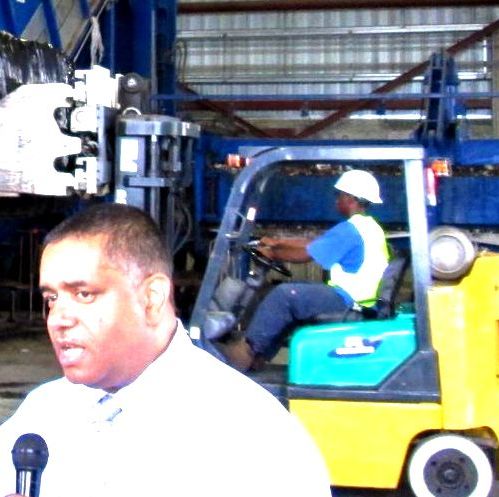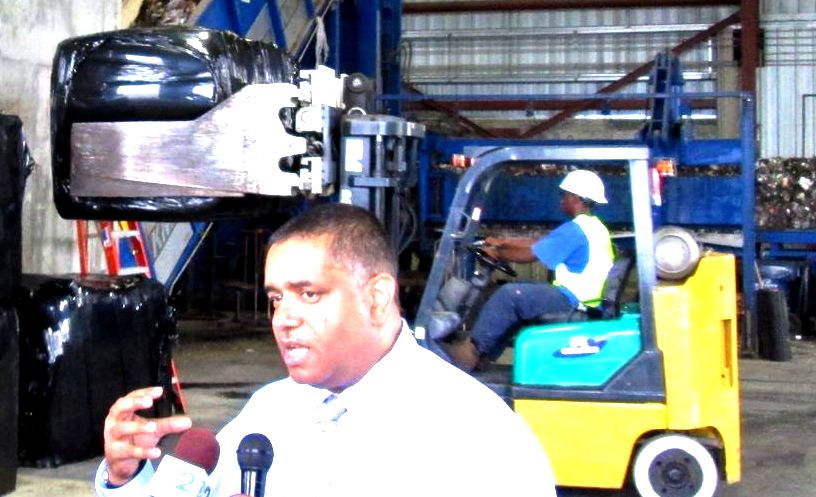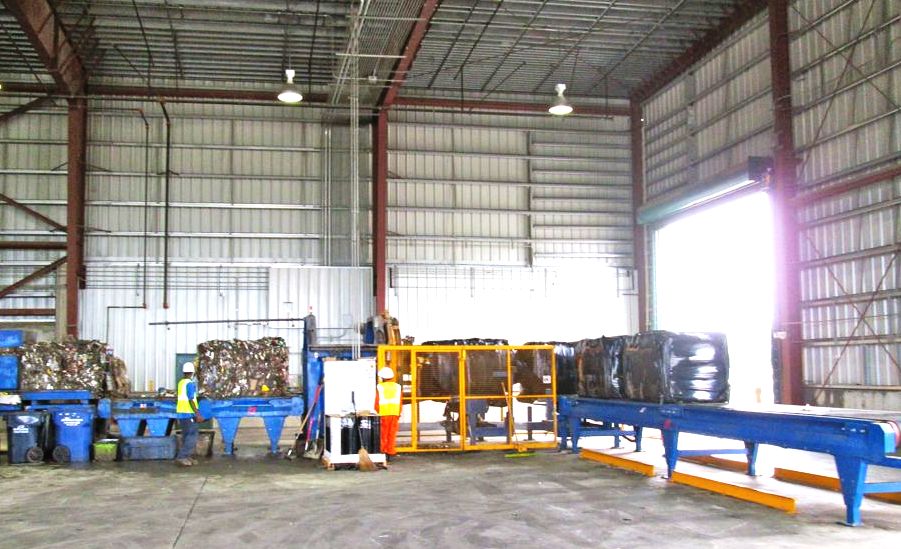

V.I. Waste Management Authority Executive Director May Adams Cornwall, St. Croix Solid Waste Director Vincent Ebbesen, and other VIWMA officials joined deJongh and his staff to tour the new Peter’s Rest Convenience Center and the transfer station, describing the operations and answering questions.
Staff at the Peter’s Rest Convenience Center help patrons sort their trash, putting regular household trash in one bin, scrap metal in another, wood and yard trash in another, and so on, with plastics and recyclables too, VIWMA staff explained to deJongh.
The convenience center helps divert much of the scrap metal and recyclable materials from the waste stream before it ever gets to the transfer station, Ebbesen said, while explaining to deJongh how the convenience center, transfer station and landfill work together to reduce the volume and mass of trash the territory must find a way to dispose of.
The U.S. Environmental Protection Agency has directed both of the territory’s landfills be closed and the Federal Aviation Administration wants the Anguilla landfill, in particular, to be closed soon because birds attracted to the landfill are a flight hazard to the nearby Henry E. Rohlsen airport. The convenience center and transfer center are part of VIWMA’s plans to accomplish that closure.
The transfer station opened in June 2012 and accepts and processes waste through a bale and wrap method. The bales are then placed at the Anguilla landfill, which is now closed, as part of the pre-closure procedure. The convenience center opened in April 2013.
The landfill is no longer accepting trash from consumers, and the bales produced by the transfer station are being used to form slopes for final closure, Cornwall told deJongh.
A conveyor belt moved car-sized rectangular blocks of compressed trash into the baler, where six or seven man-sized spools fed thick wire to a massive machine that wrapped and tied each bale like a postal package. Then the belt moved each bale to another machine that quickly wrapped it in thick layers of black plastic, pausing momentarily to move the bale a bit and switch from wrapping around the top to wrapping around the sides.
"We are one of very few facilities that wrap the bales. Many stateside facilities bale trash but do not wrap them," Ebbesen said. Wrapping makes the bales work better for stacking and sealing the landfill and VIWMA is anticipating the wrapping will "greatly reduce" the ability of birds to feed off the trash, which will make it less of an attraction to birds, Ebbesen said.
If it works as projected, Cornwall said VIWMA hopes to assuage the FAA’s concerns about birds and get the FAA to extend its lease of the property to the authority.
"How much extra does it cost to wrap the bales?" deJongh asked. "About $30,000 per quarter" Ebbesen said, referring to a quarter of the fiscal year – a three-month span.
About 15 to 25 percent of the waste stream is already being diverted – some for recycling but "mostly green waste," Ebbesen said. Right now they have a large shredder to mulch the wood and green waste, which they are using now to cover the bales. Once ground, the green waste takes up about a quarter of its previous space and it shrinks further as it decays over time, Ebbesen said.
According to Cornwall, in the relatively near future, VIWMA hopes to compost all of the green waste on a nearby plot of land within St. Croix Renaissance Park.
With these and other measures, like expanding into the adjacent abandoned abattoir, the Anguilla landfill’s life may be extended for several years – perhaps until 2020 – but ultimately it has to close, Cornwall said.
"When the landfill is closed, hopefully (the trash) will go to a waste to energy facility somewhere nearby," Cornwall said.
"I agree," deJongh added.
DeJongh said his objective for Tuesday’s tour was "really to see the combination of both the convenience center and transfer station and to see how they both work together, how we are managing the waste stream on St. Croix first, as a template for St. Thomas and then St. John."
He also wanted to get a firsthand look at "how we are transitioning toward being able to get our landfills into compliance," deJongh said.
